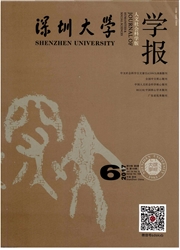

 中文摘要:
中文摘要:
有学者指出,大藏经中署名为鸠摩罗什译的《大明咒经》是依据鸠摩罗什所译经典及其他资料抄集的抄经,而所谓玄奘翻译的《般若心经》是中国人编撰的伪经。综合前人研究成果可知,玄奘在赴印度前得到的《般若心经》,可能就是署名为鸠摩罗什译的《大明咒经》的早期形态。玄奘将该经带到印度,翻为梵文,即其后流传的《梵语心经》的最初流传本。玄奘回国后又把《梵语心经》译为汉文,即现在大家习知的《般若心经》。现存《梵语心经》写本中,尚有经不空润色者。此外,印度僧人又在玄奘本《梵语心经》的基础上编辑成的三分具足的《般若心经》,该经回流中国,先后为法月(先后两译)、般若共利言、法成、施护等人译为汉文。《般若心经》是"佛教发展中的文化汇流"的又一例证。
 英文摘要:
英文摘要:
It has been pointed out that the damingzhou jing(translated by Kumarajiva),now included the Buddhist Canon,is actually a copy of the sutra translated by Kumarajiva along with various other materials,while The Heart Sutra,which is believed to be a translation by Xun Zang,is actually a false sutra forged by the Chinese monks.Based on the discoveries made by other scholars,I will argue that The Heart Sutra that was available to Xuan Zang before he went to India was the original form of above mentioned damingzhou jing.Xuan Zang brought this text with him when he went to India.He then translated it into Sanscrit.This version of The Heart Sutra was the first one to circulate.After Xuang Zang came back to China,he translated this version back into Chinese again.This is The Heart Sutra we are all familiar with.The Sanskrit version of The Heart Sutra that we know today has already been polished by Bu Kong.Based on the Sanskrit version of The Heart Sutra translated by Xuan Zang,the Indian monks compiled the The Heart Sutra that perfectly combines the three key elements.This version was also introduced back to China.It was first translated into Chinese twice by Fa Yue,and then by Bore Gongliyan,Fa Cheng,Shi Hu respectively.The Heart Sūtra is another example of culture confluence in the spread of Buddhism.
 同期刊论文项目
同期刊论文项目
 同项目期刊论文
同项目期刊论文
 期刊信息
期刊信息
